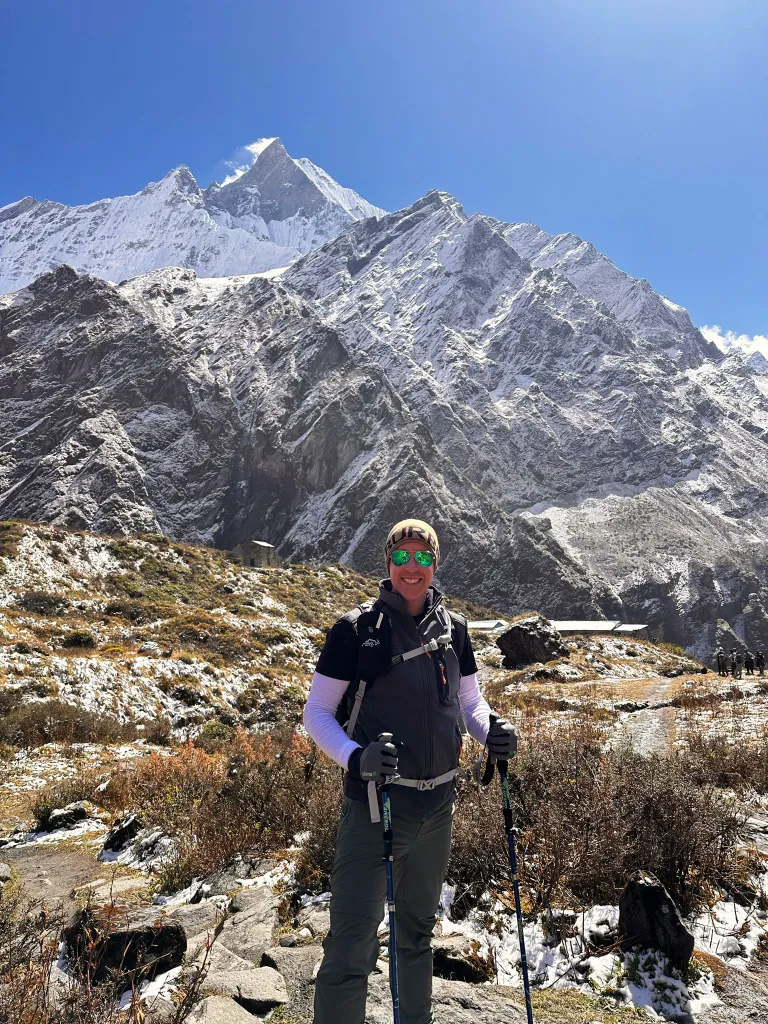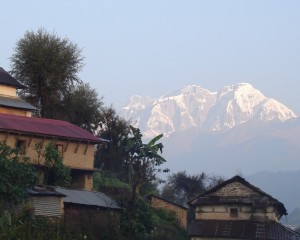Is Solo Trekking Still Banned for Foreigners in Nepal?
The land of towering mountains that wrap the natural and cultural heritages in its arms and show off its beauty is what trekkers can experience in Nepal. From the legendary Everest Base Camp to the remote trails of Manaslu, this Himalayan paradise is a haven for adventurers and trekkers like no other.
Solo trekking has long been a top choice for independent travelers, offering freedom and solitude in the mountains. However, there might be some disappointing news for them. Recently, the Government of Nepal introduced new regulations that have sparked debate among adventurers. With growing concerns over trekker safety and the well-being of local communities, Nepal has implemented a new rule affecting those looking to trek without a guide.
Solo trekking is now banned for foreigners in Nepal. As of April 1, 2023, all foreign trekkers must hire a licensed guide or porter to trek in Nepal’s national parks and conservation areas, including popular routes like Everest Base Camp and the Annapurna Circuit. This ban was introduced primarily for safety reasons, to reduce the number of missing trekkers, and to create employment opportunities in the tourism sector.
So, how do these new changes impact trekkers? Let’s find out in detail.
Understanding the New Trekking Rules in Nepal
It is no secret that there are plenty of trekking routes in Nepal, pulling thousands of trekkers from all around the world. The freedom to explore beautiful natural gems and appealing cultural heritages can be an unforgettable experience. But the more rules have had some impact on the trekkers who want to trek in the penalty.
The Government of Nepal has banned solo treks, and this ban is mandatory for all foreign trekkers. The new rule applies to all major trekking routes, including the Everest Base Camp, Annapurna Circuit, Langtang Valley, and Manaslu Circuit.
Additionally, trekkers must obtain a Trekkers' Information Management System (TIMS) card, which can only be issued through a government-approved trekking agency. This card acts as a record-keeping tool, ensuring that trekkers are correctly registered and accompanied by a licensed guide. The cost of the TIMS card has also increased to 2,000 Nepalese rupees for foreign trekkers.

Why Was Solo Trekking Banned?
The decision to ban solo trekking was made to address several concerns:
- Trekkers’ Safety: Every year, Nepal sees cases of missing trekkers or accidents due to altitude sickness, harsh weather, or navigation errors. The guide can be a way to make sure all the trekkers receive proper support and guidance.
- Emergency Situations: Solo trekkers often struggle to get help in case of an emergency. A guide can provide immediate assistance, whether it’s dealing with altitude sickness or contacting rescue teams.
- Supporting the Local Economy: The new regulation also aims to create jobs for local guides and porters, boosting Nepal’s tourism economy. Many trekking communities rely on tourism for their livelihood, and this change helps sustain their income.
The Role of the TIMS Card
The TIMS card plays a crucial role in ensuring trekkers’ safety. It records important details such as:
- Name and nationality
- Emergency contact information
- Trekking route and itinerary
This information is vital for authorities in case of natural disasters, accidents, or missing persons reports. The TIMS system helps keep track of trekkers and allows for faster rescue operations when needed.
How Do These Changes Affect Trekkers?
The new trekking rules in Nepal have a big impact on solo trekkers, especially those who love the freedom of exploring the mountains on their own.
For budget travelers, this rule can be a bit of a challenge. Hiring a guide or porter adds extra costs to the trek. Thus, it can have a big difference, making the trip a bit out of budget, especially for those who planned to keep their expenses low by traveling solo. For some trekkers, this could change how they plan their trip or even make them rethink their trekking plans.
This new rule can be a little frustrating for experienced trekkers who are used to exploring on their own. Many experienced trekkers prefer solo adventures because they enjoy the independence and peace of trekking without a guide. They know the routes, are prepared for the challenges, and like the personal connection they get from being alone in nature. With the new regulations, these trekkers may feel restricted, as they are now required to hire a guide even if they are comfortable trekking without one.
However, despite the challenges, there are some benefits to hiring a guide. First and foremost, it enhances safety. A guide can help in case of any emergencies, such as altitude sickness or injuries. They know the area well and can navigate safely through rugged terrain. Guides are also excellent at showing cultural insights, introducing trekkers to local traditions, and sharing stories about the region’s history. They can act as bridges between travelers and the local communities, providing a richer, more immersive experience.
What Are the Alternatives?
If you're hoping to trek in Nepal but want to avoid the restrictions on solo trekking, don't worry, as there are still plenty of exciting alternatives to enjoy the stunning landscapes of the country
Group Trekking
- Small Group Treks: These are the ideal choice for those who want to meet other travelers and share the cost of a guided trek. You’ll enjoy the company of fellow adventurers while exploring the iconic Everest Base Camp, Annapurna Circuit, or Langtang Valley, all under the guidance of a licensed trek leader.
- Tailored Group Treks: Some companies offer customized group treks for those traveling with family or friends. You’ll have flexibility in your itinerary while still benefiting from the safety of a professional guide and following the required regulations.
 Less-Restricted Trails
Less-Restricted Trails
If you want to escape the crowds and explore some of the less-traveled paths, there are a few trekking routes where the regulations are more relaxed:
- Khopra Ridge Trek: This quieter trek in the Annapurna region offers incredible views of the Dhaulagiri and Annapurna mountains without the heavy foot traffic of more popular routes.
- Khumai Trek: A newly opened trail, this trek is perfect for those seeking peace and beauty. With fewer trekkers and the chance to experience untouched nature, it is also a great place to visit.
- Short Treks: Routes like Poon Hill and Mardi Himal are often less restrictive and can be completed in just a few days, making them perfect for trekkers who want a quick adventure without worrying about the new regulations.
To wrap up, even with the new trekking rules, you can still enjoy Nepal's breathtaking beauty! Whether you want to join a small group trek, explore quieter trails, or combine both for a unique adventure, Nepal offers something for every kind of trekker. The country's stunning landscapes are waiting for you.
Ready to embark on your trek in Nepal? Nepal Vision Trek can help you find the perfect adventure that fits your style. Get in touch today and let us guide you to an unforgettable experience.
FAQS






